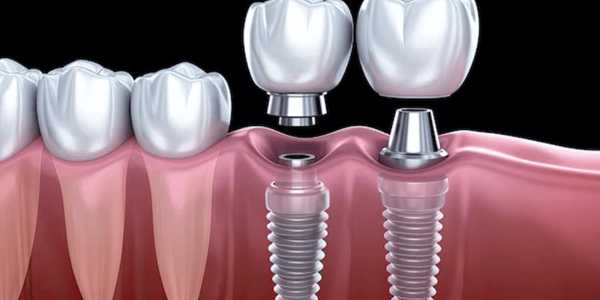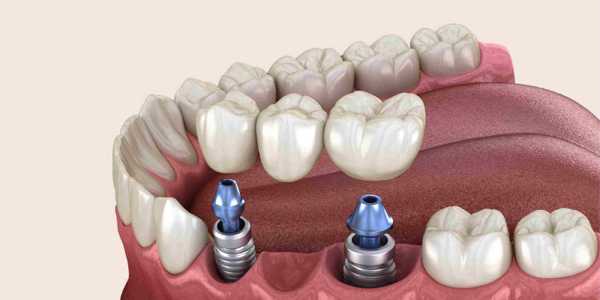In recent years, dental implants have surfaced as a revolutionary solution for tooth loss, critical in enhancing oral health. With ongoing advancements in dental technology, dental implants are increasingly embraced by both dental practitioners and patients as an effective solution. These implants restore functionality and support facial structure, bolstering self-confidence and enhancing quality of life.
Evolution of Dental Implants

The history of dental implants is rich and fascinating, stretching back thousands of years. The earliest known attempts involved civilizations like the ancient Mayans, who used seashells as primitive substitutes for missing teeth. However, the modern era of dental implants began in the 1950s when Swedish orthopedic surgeon Professor Per-Ingvar Branemark pioneered the concept of osseointegration, a process through which bone integrates with metal surfaces. This discovery set a precedent for using titanium as the material of choice for implants due to its biocompatibility and durability, laying the groundwork for modern implant technology.
In the subsequent decades, technological advancements and extensive research led to refined implant designs to improve patient success rates. The introduction of dual-surface implants in the 1980s marked a significant milestone by enhancing their integration with the jawbone. By the late 1990s, zirconia emerged as a strong alternative to titanium, especially appealing for cosmetic reasons while delivering the necessary strength and durability. Comprehensive studies, including randomized controlled trials, have affirmed the long-term success of these implants, resulting in increased patient satisfaction and diminished anxiety. Today, the evolution of dental implants showcases a vigorous commitment to improving patient outcomes, significantly influencing not only functional restoration but also enhancing oral health and overall quality of life for countless individuals.
Advantages of Dental Implants
Dental implants are a standout choice for tooth replacement compared to traditional options like dentures and bridges. One of the most notable advantages is enhanced functionality. Unlike dentures, which can be prone to slippage and discomfort, implants provide a secure solution that mimics the function of natural teeth, allowing patients to eat and speak comfortably without limitations.
In terms of aesthetic appearance, dental implants present a more natural solution than conventional dentures, which may look bulky or artificial. Implants are meticulously crafted to replicate the color and shape of a patient's natural teeth, ensuring that the restored smile looks lifelike and appealing.
Moreover, dental implants contribute significantly to self-esteem. Research indicates that individuals with implants report enhanced quality of life linked to increased confidence in their smiles. Surveys have shown that 93% of implant recipients express satisfaction with their outcomes, resulting in improved interpersonal interactions and overall well-being.
The longevity and durability of dental implants also warrant attention. When properly maintained, these implants can last a lifetime, whereas dentures typically require replacement every five to seven years. Research demonstrates that dental implants can achieve success rates of up to 98%, far exceeding the lifespan of bridges and dentures, which often face various complications over time. This reliable performance solidifies implants as a cost-effective long-term solution for dental restoration, confirming their status as the preferred choice in modern dentistry.
The Procedure: What Patients Need to Know

Placing dental implants involves a multi-step approach, beginning with an initial consultation. Dental professionals assess a patient's oral health during this visit and discuss treatment objectives. Advanced imaging techniques, such as 3D scans, are utilized to develop a tailored treatment plan that meets the patient's specific needs.
Once a patient is approved for the procedure, the first surgical phase involves inserting a titanium post into the jawbone, which is often associated with anxiety due to misconceptions about pain. Dentists typically use local anesthesia or sedation to ensure a pain-free experience. Following surgery, a critical healing phase called osseointegration occurs, during which the jawbone fuses with the implant — a process that may take three to six months.
After the osseointegration process, a dental crown or abutment is affixed to the implant, completing the restoration. Dental technology advancements have refined this procedure, making it more efficient and less invasive. Techniques such as guided implant surgery not only reduce trauma but also facilitate quicker recovery.
Many patients worry about recovery times; however, most individuals can resume normal activities within a few days, experiencing minimal discomfort. Key to the long-term success of dental implants is diligent aftercare, which includes proper oral hygiene practices and regular follow-up appointments. Thanks to modern advancements and a strong focus on patient experience, dental implants represent a reliable option that can enormously enhance the quality of life for individuals with missing teeth.
The Impact on Dental Practitioners
The increasing popularity of dental implants has markedly altered the dental practice landscape. Dental professionals must adapt their skills and practices to meet this growing demand as more patients seek implant solutions for missing teeth. This shift necessitates a renewed emphasis on ongoing education and training in the latest implantology technologies and techniques.
For many dental practitioners, this translates to investing substantial time and resources into specialized training programs covering everything from surgical placement to aesthetic considerations. Consequently, practices face financial implications; upgrading equipment and pursuing continuous education are vital for remaining competitive in the evolving market. On the positive side, embracing this trend opens avenues for growth—dentists specialising in implants can attract a wider client base and bolster their reputations.
Additionally, the skill set required has expanded beyond traditional dentistry to include an in-depth understanding of surgical techniques, materials science, and digital technology applications like 3D imaging and computer-guided placement. This transition enables dental professionals to achieve higher-quality patient outcomes, benefiting their practices and enhancing patient satisfaction.
Looking Towards the Future
Dental implants' emergence has drastically shifted individual patient experiences and the broader dental industry. With their high success rates and enhanced functionality compared to traditional options, dental implants have established themselves as essential solutions for tooth replacement. As technology advances, future developments hold the potential for even more effective materials, improved integration processes, and increased patient accessibility. This continuous innovation is set to redefine possibilities within restorative dentistry, ensuring that dental implants remain a foundational component of dental care.